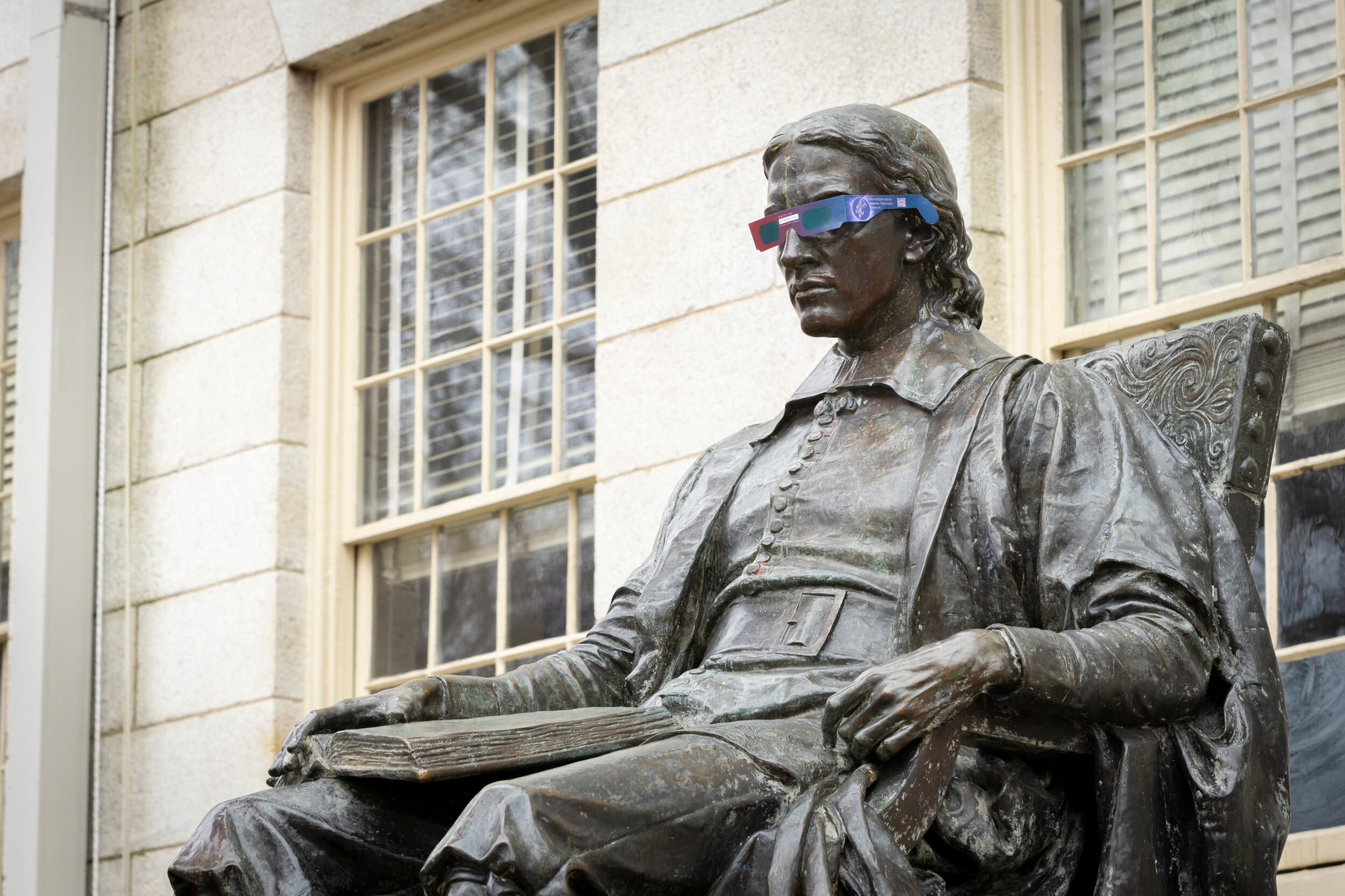Yes, it’s exciting. Just don’t look at the sun.

Niles Singer/Harvard Staff Photographer
Lab, telescope specialist details Harvard eclipse-viewing party, offers safety tips
Those who miss this one could need to wait 20 years to get another chance.
A total solar eclipse will cross Mexico, the U.S., and Canada on April 8, bringing millions of North Americans a striking celestial spectacle. The next total solar eclipse to cross the continental U.S. will be in 2044.
Allyson Bieryla, astronomy lab and telescope manager at the Center for Astrophysics | Harvard & Smithsonian (CfA), tells us what to expect, and how to view this natural wonder safely.
What should local eclipse-viewers expect?
Cambridge is not in the path of totality, but locally people will experience close to a 93 percent partial eclipse, which will start at 2:16 p.m. and end at 4:39 p.m., with maximum coverage occurring at 3:29 p.m.
During maximum, you will see just a sliver of the sun remaining. It won’t get completely dark like it would in a total eclipse, but it will still be a spectacular sight.
Over the course of the event, you will see a “bite” of the sun being eclipsed by the moon that will grow to cover most, but not all, of the sun. And then it will wane away.

And what is actually happening?
A total solar eclipse happens when the moon passes in front of the sun, casting a shadow on the Earth. The shadow only falls on a small portion of the Earth, so you are very lucky if it happens to fall where you live.
The “total” part is when the sun is completely blocked by the moon. For those that are able, whether it is this one or a future eclipse, traveling to the path of totality is worth every effort it takes. It is the most unnatural natural experience.
What opportunities for scientific discovery does a total solar eclipse offer?
A total solar eclipse allows people to view the corona, or the sun’s outermost atmosphere. Because the sun’s surface is so bright, we don’t normally get to see the corona because it is so much dimmer. There is still a lot that astronomers would like to learn about the corona.
What activities is the CfA hosting for local eclipse-viewing?
There will be a public event taking place in the Science Center Plaza from 2-5 p.m. There will be solar telescopes, free eclipse glasses, and a bunch of activities, including pinhole cameras, cyanotype prints of the sun, and a live feed of the totality.
We will also have LightSound devices converting the brightness of the sun into sound as the light dims, providing a nonvisual way for people to experience the eclipse.
Rules for safe eclipse-viewing?
Observing the sun is safe if you have the correct equipment. It is never safe to look directly at the sun without proper eclipse glasses or filters, unless you are in the path of totality and in the brief moments of totality. Then, and only then, can you safely look at the sun without protection.
Cambridge is not in the path of totality, so it will never be safe to look at the sun without your eclipse glasses. It is also not okay to point a telescope, binoculars, or a camera at the sun without proper filters.
We will have all the proper equipment and experts on site at the Science Center to guide you safely looking at the sun during the eclipse. Trust me, it is worth it!




